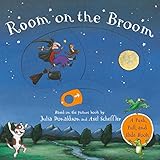Jupiter and Saturn Will Form A Rare "Winter Star" On December 21, 2020
Language
Reading Level
Listen to Article

The dark mornings and low temperatures in the Northern Hemisphere may lead one to think that winter is well on its way. However, the astronomical start of the chilly season will not be until December 21, 2020. Called the winter solstice, it is the point in time when the Northern Hemisphere is farthest away from the sun, resulting in less sunlight to the region this year. 2020's longest night will coincide with two exciting celestial events — the peak of the Ursids meteor shower and a "great conjunction" of the solar system's two largest planets, Jupiter and Saturn.
A conjunction occurs when two planets appear close to each other in the sky because they line up with Earth in their respective orbits around the Sun. While observing the celestial bodies alongside each other is always exciting, Jupiter and Saturn's alignment is even more so since it occurs once about every 20 years.

The winter solstice meet-up between the two gaseous giants is even more remarkable given that they will seem to be just a tenth of a degree apart — close enough to appear like one massive "winter star" — from Earth. Jupiter and Saturn previously came this close in 1623 but were not visible to most skywatchers because of their location in the night sky. The last time Earthlings were able to observe this phenomenon was almost 800 years ago, in 1226, and the next time will not be until the year 2080! The best part? The "greatest great conjunction," as it is being called, can be observed from anywhere on Earth!
"You can imagine the solar system to be a racetrack, with each of the planets as a runner in their own lane and the Earth toward the center of the stadium,” said Henry Throop, an astronomer in the Planetary Science Division at NASA Headquarters in Washington, DC. “From our vantage point, we’ll be able to see Jupiter on the inside lane, approaching Saturn all month and finally overtaking it on December 21.”

According to NASA researchers, while the gaseous planets may appear as one from Earth, they are actually hundreds of millions of miles apart in space. Also, while the conjunction's occurrence on the winter solstice is fortuitous for Northern Hemisphere residents, it is merely a coincidence, based on the planets' orbits and the Earth's tilt.
“Conjunctions like this could happen on any day of the year, depending on where the planets are in their orbits,” said Throop. “The date of the conjunction is determined by the positions of Jupiter, Saturn, and the Earth in their paths around the Sun, while the date of the solstice is determined by the tilt of Earth’s axis. The solstice is the longest night of the year, so this rare coincidence will give people a great chance to go outside and see the solar system.”
Ready to watch this once-in-a-lifetime phenomenon? Here are some tips from the experts. Head to a park or field where you can get a clear view of the sky an hour after sunset, and look towards the southwestern sky. Jupiter will appear like a sparkling, unblinking star, even amid bright city lights. The slightly fainter Saturn will be visible towards Jupiter's east for those in the Northern Hemisphere and west for those in the Southern Hemisphere. Though no special equipment is needed, using binoculars or a small telescope will enable you to see Saturn's famous rings and Jupiter's four large moons! Mark your calendars today, and be sure to share your experience by adding a comment below.
Happy Viewing!
Resources: NASA.gov, Earth&Sky.org, Space.com

Get the Workbook for this article!
Workbook contains: Article, Reading Comprehension, Critical Thinking Questions, Vocabulary in Context (+ answers), Multiple Choice Quiz (+ answers), Parts of Speech Quiz (+ answers), Vocabulary Game (+ answers)Cite Article
Learn Keywords in this Article
312 Comments
- flowergirl237over 3 yearsCool!!!!
- pinkkitty9over 3 yearswow cool
- gfvdbjzbxalmost 4 yearsWoah it is so cool I wish I seen it😁😁😁😁.
- danny-boyalmost 4 yearsI saw it
- adidassquadalmost 4 yearsI didn't see it i'm really upset
- redpandagamer10almost 4 yearsso cool
- tonyynotalmost 4 yearsim missed it also 😭😭😟
- robloxtime999over 3 yearsso did i
- src12almost 4 yearsI missed it. But it must be cool to see it!
- hermione222011almost 4 yearsOmg so cool
- pinkkitty9almost 4 yearsughhh............. I missed it! I don't look at the sky for cool stars but I would have been lucky too see it




